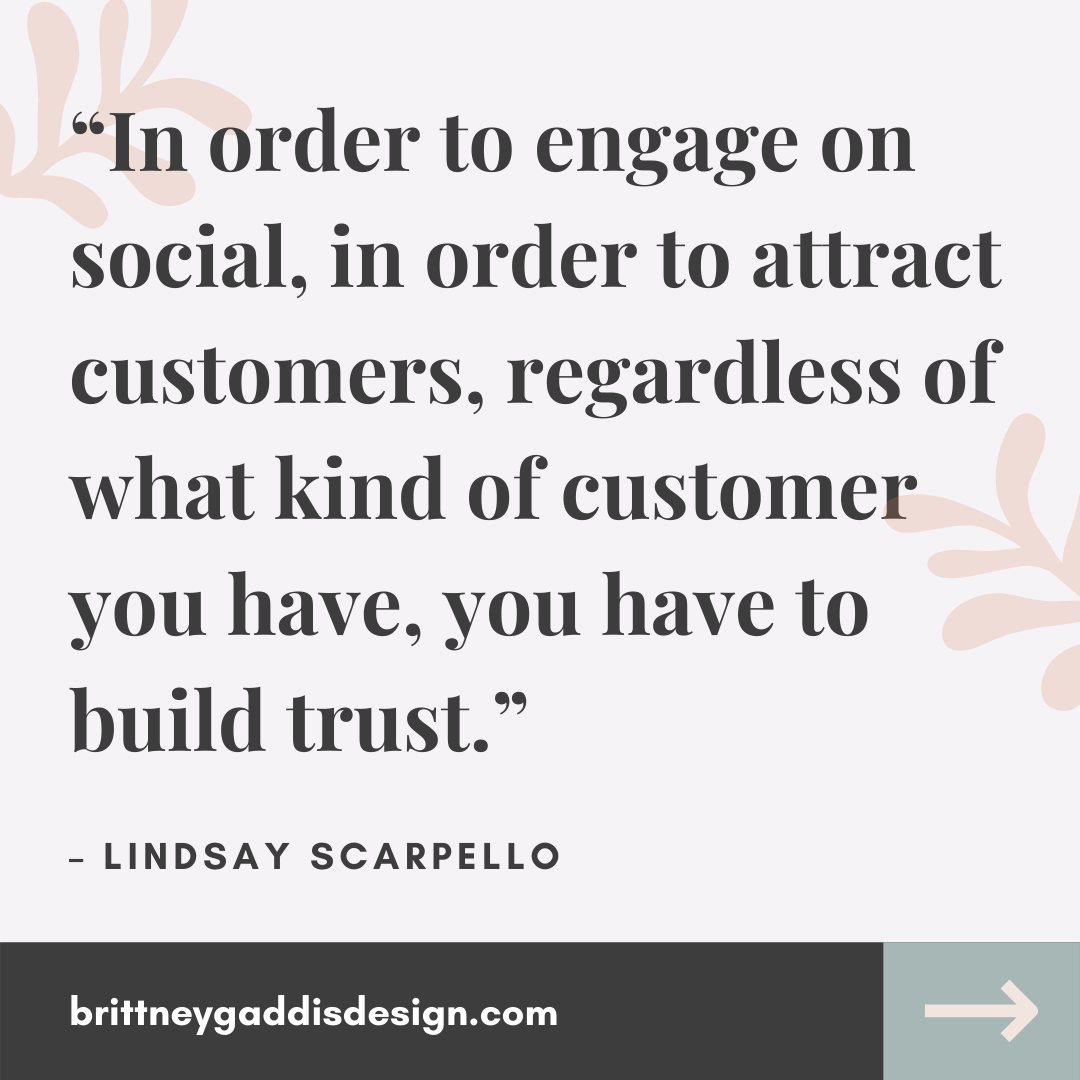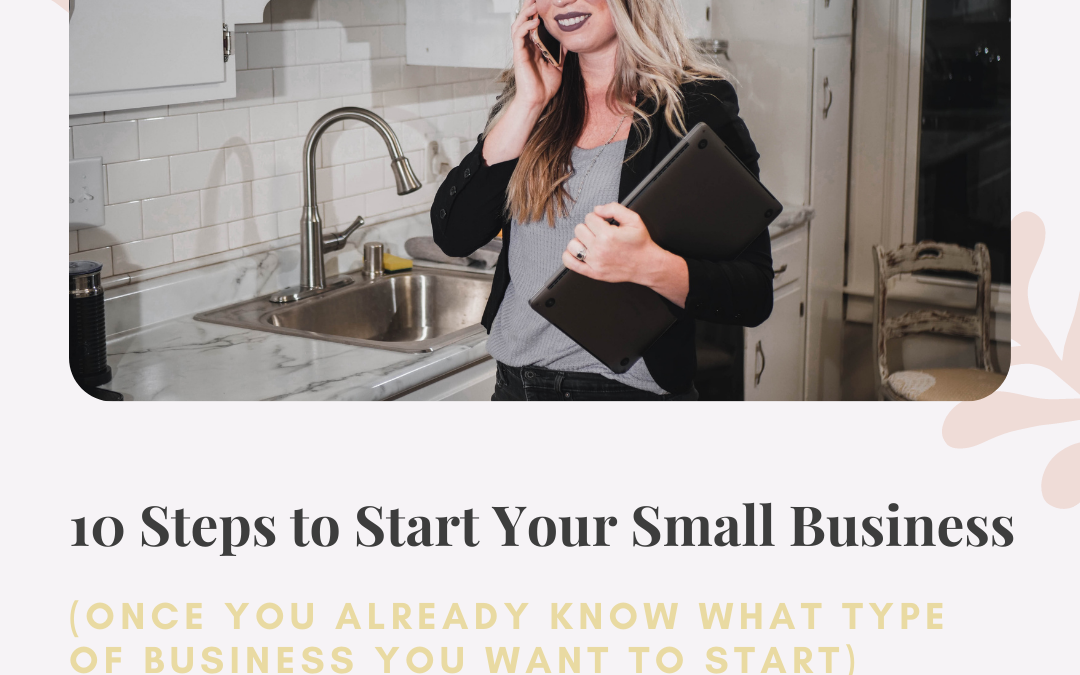Starting a small business is an exciting endeavor for anyone yearning to set out on their own. Being your boss is a liberating feeling and starting your own small business provides a creative outlet and a new sense of ownership. I’ve put together 10 Steps to start your small business to make it easier to start living your dream life sooner!
Striking out on your own can be daunting, but these ten steps will help make the process more digestible. Take it one step at a time. The end goal will be worth the work and the wait!
Advice for Starting Your Small Business
1. Define Your “WHY”
When deciding to venture out on your own, it’s important to answer the question of “why?” Are you starting your small business for personal reasons? We start businesses to make money and often because we have an urge to do something we think is fun and profitable. Many entrepreneurs start new businesses more than just passion. They’re driven by a desire to change the world or improve their standard of living.
What is your WHY for starting your own business? Being able to define your motivation for starting a new business will help you establish a brand that speaks to your desired customer base. Knowing why you’re starting your business will help drive the direction of your brand and establish the foundation your company is built on.
Consider Demand
There is always a market need for new types of businesses, products, or services. Is your idea taken? Is there a large demand for your business? Even if your idea isn’t suited to the current market, a future trend may warrant the pursuit. Get to know current market needs and potential customer desires by asking your customers who they feel are most underserved by existing markets. Provide customers with a product or service that meets their needs. Then determine if there is potential for further development of your product.
The End Goal
Define your end goals. This is important because the plan you make in the beginning will influence your business model throughout the life of your company. Is this a business you want to own forever? Do you plan to sell your business down the line? It’s important to understand your end goals as part of your “why” when starting a new business.
2. Financing Your Business
Personally, I don’t like the idea of taking on debt for my business. I operate my freelance business in a way that I don’t need to borrow capital. I realize that not all businesses have low overhead in the beginning and your situation may be different. If this is the case, consider crowdfunding, or present your business plan to your local bank for a loan.
Don’t Quit Your Day Job – Yet
In the meantime, don’t quit your day job. I always recommend continuing your current position and creating a savings account to use for your business expenses. Keep working your day job at the same time as your side hustle until you can no longer keep up with the demand of both. When this occurs, it’s time to move full-time into your small business.
If you operate a product business, consider using print-on-demand services. If you are a freelancer, consider working from home instead of renting an office space right away. The fewer upfront costs you take on, the quicker you can become profitable.
3. Create a Strategic Plan
Once you have decided to start a business, create a strategic plan. A strategic plan focuses your time, energy, and money on the activities that most closely align with your goals.
Don’t confuse a strategic plan with your business plan. A business plan sets short- or mid-term goals and defines the steps necessary to achieve them. A strategic plan focuses on your mid-to-long-term goals and explains the basics for achieving them. This involves stepping back from your day-to-day operations and asking where your business is headed and what your priorities should be. Your strategic plan should answer three questions — Where is your business now? Where do you want to take it? And what do you need to get there?
4. Register Your Business
Registering your business is an integral step in protecting yourself and your business. Legal requirements vary by region, so be sure to check based on your business structure and location for the next steps. The United States Small Business Administration offers additional information on deciding what type of business structure will work best for you.
5. Purchase Your Domain Name and Hosting
After registering your business, you want to purchase a domain name for your small business website. If you plan on working with a company that provides SEO services, they may recommend the best domain name for your business, based on availability. Many businesses want to buy “yourbusinessname.com,” which may or may not be available depending on the name of your business. The other option that many businesses consider is choosing a domain name with certain keywords included, such as “owensboroaccountant.com” or “bendoregonitalianrestaurant.com”.
Website Domain
Choosing a domain name depends largely on what’s available, with many .coms being harder to come by. Head over to Bluehost.com to browse available domain names.
Next, you need to lock down website hosting. There are many hosting providers to choose from. Consider your budget, how you plan to use your website, how many visitors you expect to visit your site each day, and the number of websites you intend to host. These factors will help you choose the size of hosting plan necessary for your business.
Hosting
I recommend Bluehost.com for website hosting. Bluehost is the official WordPress partner, which means it’s very complementary to use with your WordPress website, coming pre-installed. Bluehost also offers a free SSL certificate, which provides security for your website. If you look at the URL bar of any website, you’ll notice it either has an open or closed lock next to the domain name. URLs with a closed lock protect your customer’s personal information and are favored by Google search engines.
In my experience, Bluehost hosting has been intuitive for beginners and provides you with a fast-loading website. Website speed is essential, especially in the age of mobile websites and short attention spans.
6. Build Your Brand
Branding is about creating a connection between your brand and your customers — be it through brand messaging, products or services. As a company grows, the role of branding has become more important as customers become more knowledgeable about your business and its offerings. The goal of branding is to develop an emotional investment in your brand so when customers choose to do business with you, they have a reason to stay loyal and keep coming back.
Any good marketing strategy begins with defining your target market. Then, you must figure out how to get noticed by the people most likely to connect with your brand.
Develop Customer Persona
Market research comes into play when developing customer personas. Use your market research to create profiles of your ideal customers. Name them, give them favorite foods, favorite music, a family. Get to know your customer personas and call them by name. Keep these personas in mind when making every decision related to your business.

Establish Brand Identity
Think about it. We all know Coca-Cola as a soda brand, but what is Romaine’s? What about Starbucks? What about Nestlé? Each of these companies is incredibly successful because they have a unique identity that sets them apart from competitors. Brand identity makes each of these companies distinct and helps them stand out from competitors in everyday interactions. You may think that establishing your brand is as easy as slapping a logo on a can, but that’s incredibly difficult. Contact me today for help with bringing your brand to life.
Here are some elements that should be included in your brand’s visual identity:
- Logo
- Your logo may include a primary logo and its mockups
- Color Palette
- Textures/Graphic Element Library
- Photography Guideline
Develop a Brand Strategy
For many businesses, the brand strategy focuses on how the product or service is perceived throughout the customer experience (e.g., customer reviews, keywords used) as well as how they think about the organization itself. This includes visual elements such as signage, colors, and icons. The brand strategy is a well-defined and executed plan for the long-term development of a successful brand. The brand strategy affects all aspects of a business and connects directly to consumer needs and emotions in a competitive marketplace.
7. Establish a Workspace
Many factors come into play when choosing a business location including a budget, space needed, location, and business type.
- Home Office: A home office may be the best option If you are a sole proprietor operating an online business. Working at home can save time and money, but may not work for businesses with lots of inventory or on-site customers.
- Commercial Property: This is best for businesses with large products and large inventories.
- Co-working Space: This is a fun option for tech startups or freelancers. I very much enjoyed the networking opportunities associated with coworking!
- Mobile Businesses: A mobile business is a great idea for businesses such as dog grooming, lawn care, food trucks, or even a small book store. With the right setup, the possibilities are endless!
- Industrial Property: If you operate a manufacturing business, or something similar, you will likely need to consider an industrial site for your business.
Keep in mind that your workspace will evolve as your company grows. You may start out working from home and renting a storage unit to hold inventory until your sales take off and you can afford a commercial space to operate your business.
8. Social Media

Set up all of your social media accounts. You don’t have to use all of them, but I recommend you sign up for Facebook and Instagram. Some people use these platforms almost exclusively as a search engine, which means if you want to be found you have to be on social media.
Remain active on social media platforms and fill out your profiles thoroughly. Social media allows you to build trust with your customers. By actively engaging and showing the Internet who you are behind the price tag, helps establish brand loyalty and personalizes your business.
Be available to answer your clients’ questions on Facebook Messenger and Instagram DMs. You may consider eventually hiring a social media manager for this role if this isn’t something you enjoy doing or have the time for regularly.
9. Networking

Networking has been imperative in my experience as a small business owner. You can invest in SEO, have the most solid social media strategy and pass out all of the business cards you want, but it’s so much easier to make a client out of someone that already knows and trusts you.
In today’s digital world, we’re able to network via social channels. It’s easier than ever to connect with potential clients with the click of a button (and some carefully planned content).
- Clubhouse is a new social marketing app for iPhone that allows you to listen in on live chats. Chats are organized by topic and are a great way to gain a following. One idea for networking in the digital world is to host a Clubhouse chat on a topic that you’re an expert in. Invite listeners to chime in and develop relationships.
- LinkedIn can be a helpful tool to engage with people connected to your current network. Start with a few past colleagues or friends, and find new connections from their profiles. You can also search via job title and location, which may be a great way to find the type of client you’re interested in connecting with.
- Facebook Groups have become increasingly popular for connecting with others within your niche. Search on Facebook for keywords within your area of interest, such as “Bend, Oregon locals”. Facebook Groups where potential customers hang out will be right at your fingertips! Always make sure to read the group rules and network respectfully. No one likes spammy advertising!
Traditional Networking
Alternatively, Traditional networking may be the best way to jumpstart your new business. Get out there and start talking to people, listen to your potential customers tell their stories, develop partnerships and see where the idea takes you. There are a variety of ways to participate in traditional networking. Join a local Meetup event. Reach out to former colleagues to let them know what you’re up to. This works especially well if you remain in the same field. Ensure that you maintain a professional reputation when leaving your current role.
10. Continue Innovating, Improving, and Growing
It’s easy to get lost in the shuffle when it comes to starting and growing a business. Be willing to take risks and fail often to find new opportunities that will pay off in the long run. One way to stay focused in the competitive and entrepreneurial business environment is to stay up-to-date about new developments in your industry. Read blogs, magazine articles, and business websites to stay current on what’s going on within your niche. If you want to be informed about what’s going on in the world of business and manufacturing, for example, search for relevant articles and updates on the Internet.
Lastly, listen to your customers. You are the expert in your niche and your customers come to you for a reason. It’s still essential to be open and willing to listen to your customers’ feedback and grow together.
Establish Your Small Business Brand
Starting your small business is an exciting endeavor and teaming up with the right people makes a big difference in establishing your brand. I have worked with businesses of all sizes to build their brands and help them get started on the path to success. Take a look at my portfolio for a peek at what I have done to help new businesses develop their brands.
Establish your small business brand from the ground up with the help of Brittney Gaddis Design. Contact me today to learn more about how we can partner to help your business grow.




Recent Comments